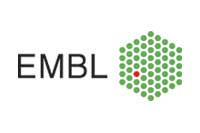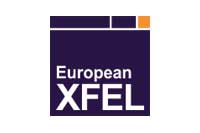Reflecting on another three months’ worth of advances Understand article
Science in School is published by EIROforum, a collaboration between eight of Europe’s largest inter-governmental scientific research organisations (EIROs). This article reviews some of the latest news from EIROs.

EIROforum
EIROforum combines the resources, facilities and expertise of its member organisations to support European science in reaching its full potential.
EMBL: Viruses, from foes to friends

Antibiotic resistance is a growing concern worldwide, but another weapon against bacteria is re-emerging: bateriophages. These very specific viruses attack only bacteria, not humans or animals.
Bacteriophages essentially act like big syringes, injecting their genetic material into a bacterium. After multiplying safely inside the cell, they destroy its cell wall and spread out to infect new cells.
Scientists at EMBL Hamburg have discovered how endolysins, the viral enzymes that degrade the bacterial cell wall, are activated. Using X-ray crystallography techniques, they determined the 3D structures of the inactive and the active forms of the enzymes, and deduced how the enzymes switch from one state to the other. This finding opens the door to engineering targeted bacteriophages that could destroy specific bacterial species and perhaps become an efficient solution to antibiotic resistance.
Read the original article in PLoS Pathogens:
Dunne et al. (2014) The CD27L and CTP1L Endolysins Targeting Clostridia Contain a Built-in Trigger and Release Factor. PLoS Pathogens 10(7): e1004228. DOI: 10.1371/journal.ppat.1004228
Read more about this story on the EMBL news portal.
EMBL is Europe’s leading laboratory for basic research in molecular biology, with its headquarters in Heidelberg, Germany.
European XFEL: The world’s brightest X-rays meet the world’s flattest mirrors

Scientists and engineers at European XFEL are working on installing many pieces of equipment in the tunnel systems along the 3.4 km-long complex. Among the most prominent pieces of infrastructure are items that will manipulate and direct the X-rays to the beamlines. Eventually, this will include some unique optical instruments that have been in development through partnerships with industry.
Among these instruments are the flattest mirrors ever built. The X-rays in the tunnels of the European XFEL complex do not run in perfectly straight lines: in order to channel X-rays with different qualities towards the experiment hall, they have to branch off in several places, causing deviations from straight paths. It is at these bends and branches that the world’s flattest mirrors have to reflect the world’s most intense X-rays.
Each mirror, 90 cm in length and made of silicon, has special mechanisms that help it deal with the high power of the X-rays while reflecting them in a manner that preserves their laser qualities. What can usually be perceived with optical instruments as a flat mirror is actually curved by as much as a 100 km radius. This curvature would be unacceptable for some of the mirrors used for the X-ray laser. So these specialized mirrors have to be flatter than flat. Small piezo-electrical elements are evenly spaced along the mirror’s edges to make tiny adjustments, so the mirror will not deviate from flatness by more than a few nanometres. That is the equivalent of a 28 km road not moving up or down by the width of a human hair for its entire length. A mirror prototype was developed and tested early this year, and the vacuum chambers in which the mirrors will sit within the tunnels have likewise been designed and tested.
The tunnels are being prepared for the installation of highly technical components such as these. Items such as supports for the beam pipeline and platforms for the X-ray-generating undulators are being installed throughout the photon tunnels on the Schenefeld end of the facility near the underground experiment hall. The tunnels themselves are in the process of being closed off and brought to operating conditions as installations of technical infrastructure continue into the coming year.
European XFEL is a research facility currently under construction in the Hamburg area in Germany. It will generate extremely intense X-ray flashes for use by researchers from all over the world.
ILL: Neutron diffraction sheds light on photosynthesis

Scientists from ILL and CEA-Grenoble have improved our understanding of the way plants evolved to take advantage of sunlight. Using cold neutron diffraction, they analysed the structure of the thylakoid lipids found in plant leaves where photosynthesis takes place. These light-sensitive membranes that cover an enormous surface area, with several hectares being present in every square metre of leaf.
The thylakoids present in plants and algae are remarkable in possessing a unique lipid composition which is not replicated by any other cellular membrane. The conservation of this composition across all plants throughout millennia of evolution has led scientists to speculate as to its role in the structure of thylakoids and its significance for the photosynthetic process.
The experiments’ results reveal that lipids do indeed play a central role in determining the structure of photosynthetic membranes. They suggests that the dense lamellar stacking of thylakoid bilayers is due to the presence of hydrogen bonds which stick the membranes together across layers of water – a discovery which opens the door to a deeper understanding of photosynthesis in plants.
ILL is an international research centre at the leading edge of neutron science and technology, based in Grenoble, France.






